This article by Hisa Takuma for Shin Budo magazine follows on from the series he wrote on Aiki-budo. In the issue, he explains self defense techniques created specifically for women. Stanley Pranin first published photocopies of these in Aiki News #90 and I was able to find the original in Japanese thanks to the help of fellow budo researcher Baptiste Tavernier, who was kind enough to retrieve them for me from the archives of the International Budo University (国際武道大学, Kokusai Budo Daigaku). I also did a bit more digging around the history of those pictures, which appear in Hisa’s technical manual called the Soden, and I found out that the person who demonstrates these techniques is Tokunaga Chiyoko (徳永 千代子)1, an accomplished martial artist who was also involved in negotiations with the Japanese Ministry of Education for the codification and reintegration of Naginata in schools in the 1950s. The uke is none other than Yoshimura Yoshiteru (吉村 義照), who was one of the students of the Asahi newspaper who received the kyoju dairi from Takeda Sokaku in 1936.
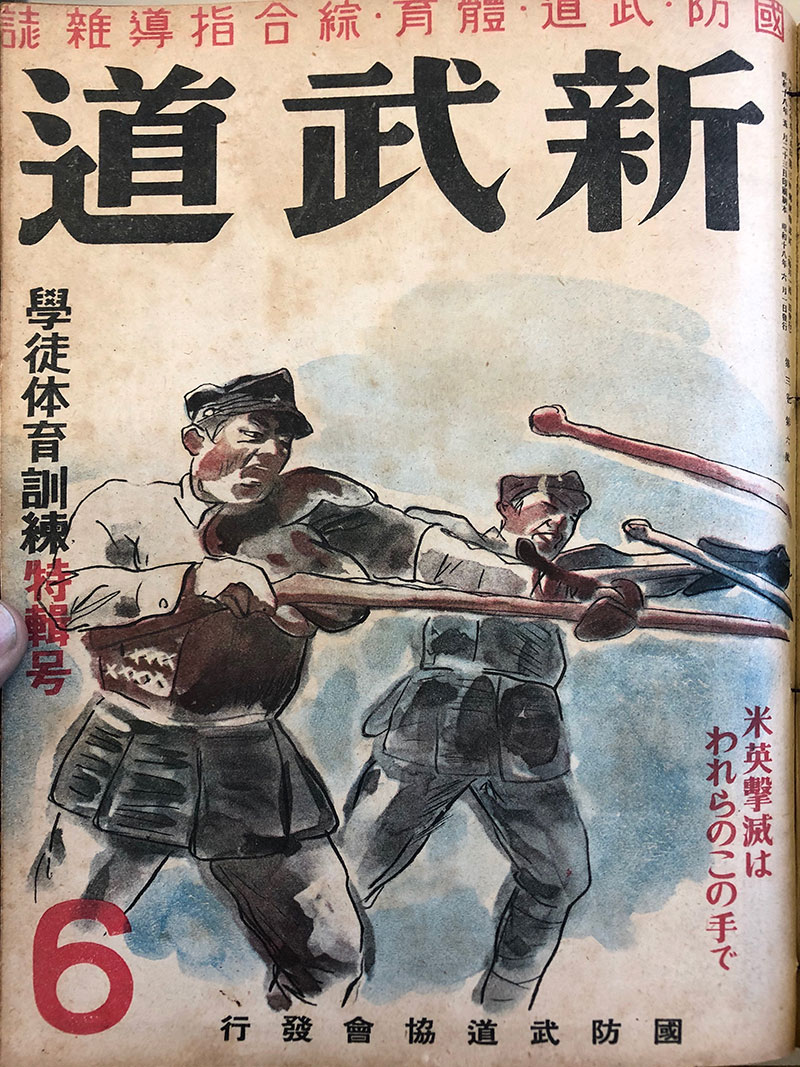
Self -Defense Techniques for Women
by Hisa Takuma, menkyo kaiden, shihan
I will continue to talk about Daito-ryu Aiki-budo, even though it is impossible to describe exhaustively the details of the okugi2, hiden3 and kaiden 4 repertoires in the limited space of a magazine. All this will be presented later in a book which is planned in the collection “Shin Budo Sosho”5, and as for the present issue, I will present part of the Aiki-budo curriculum relating to women’s self-defense6.
Women are not naturally as strong as men. It is not, however, difficult for them to protect themselves and to defeat an attacker if they have learned martial arts. Since martial arts do not rely on strength, it does not matter if the attacker is stronger. This is the outstanding power of the martial arts. Here I would like to introduce Aiki Budo as used for women’s self-defense and show how it works through photographs. I hope that you will learn the basic principles presented. There are twelve techniques which are especially appropriate for women’s self-defense.
- Kihon waza (basic movement)
- Suwari waza Shomen uchi
- Suwari
- Tachi waza Yoko shomen
- Tachiwaza Tekubi dori
- Tachi waza
- Tachi waza Sode dori
- Tachi waza Yokomen uchi
- Tachi waza Tekubi dori
- Tanto waza
- Tanto tsuki
- Ushiro eri kubi dori
In this article I will present techniques 1, 2, 5, and 6.7
First technique – Kihon waza
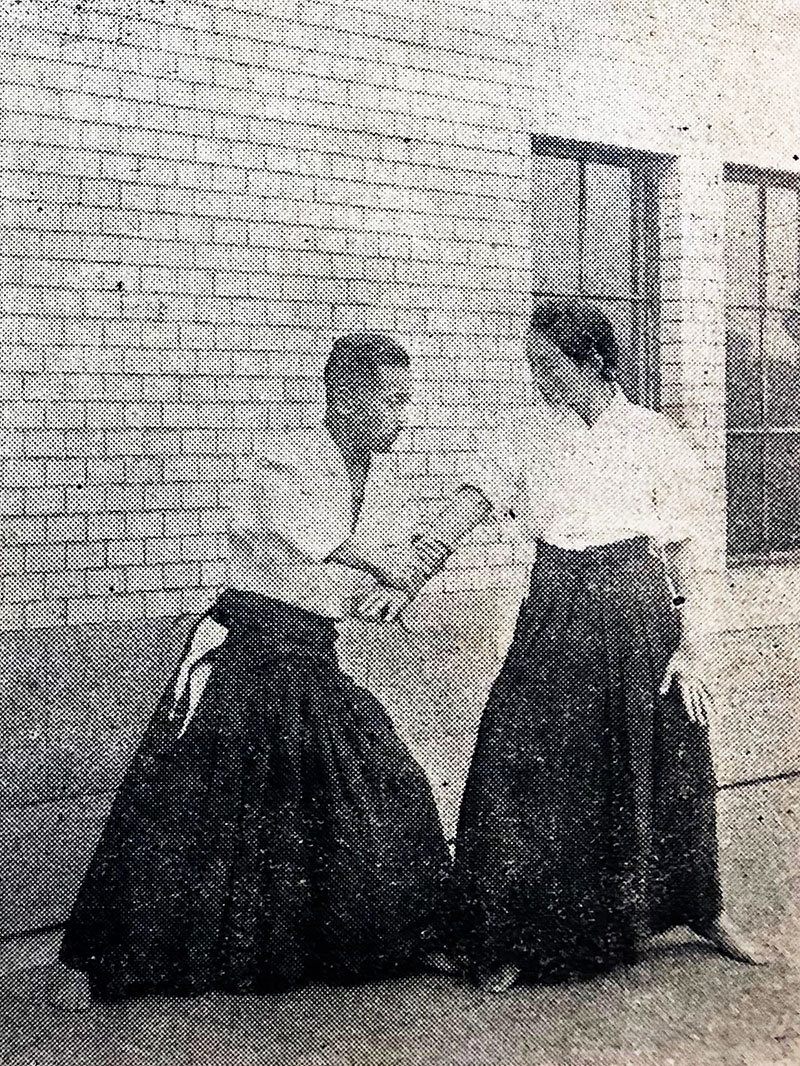
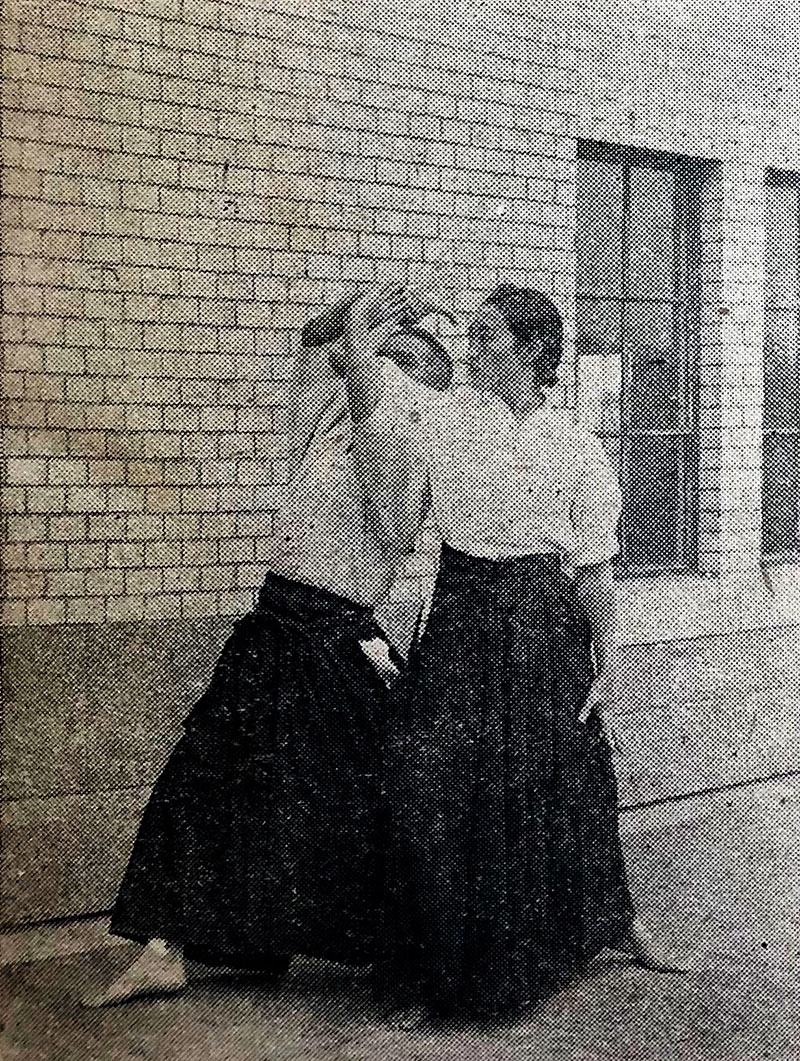
Second technique – Suwari waza shomen uchi
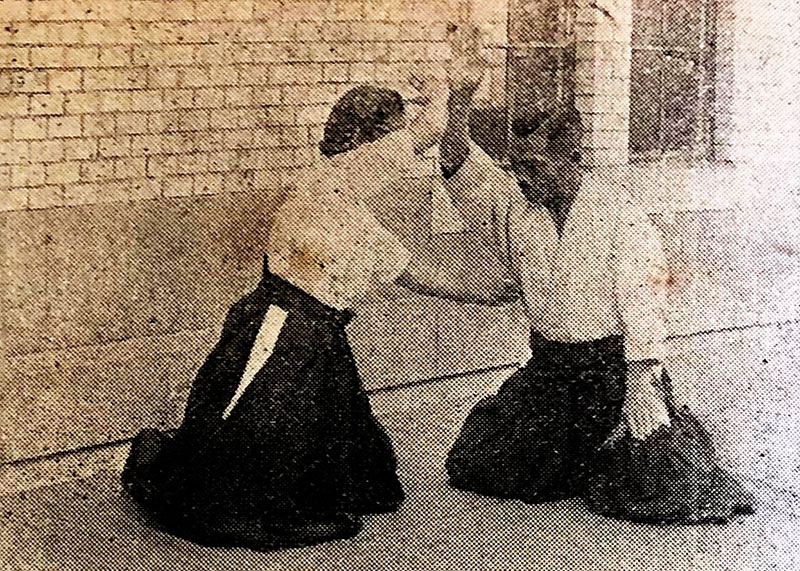
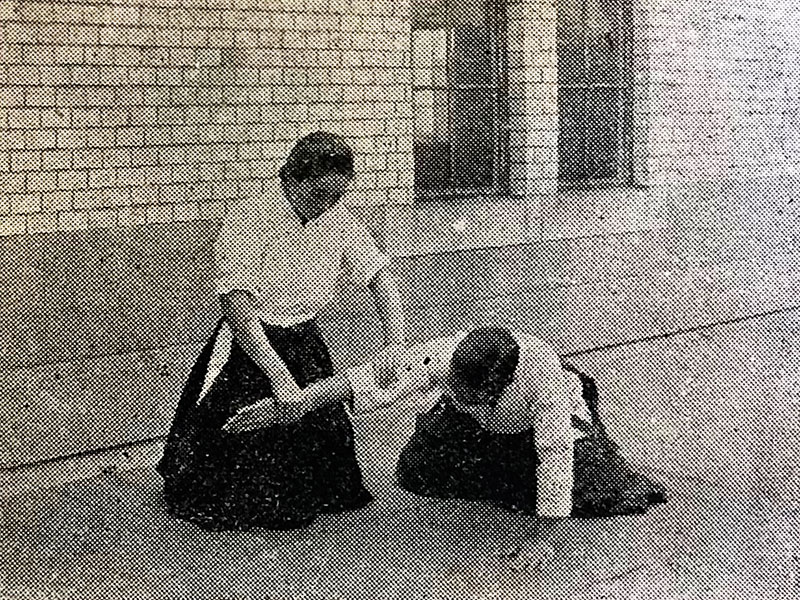

Fifth technique – Tachi waza tekubi dori
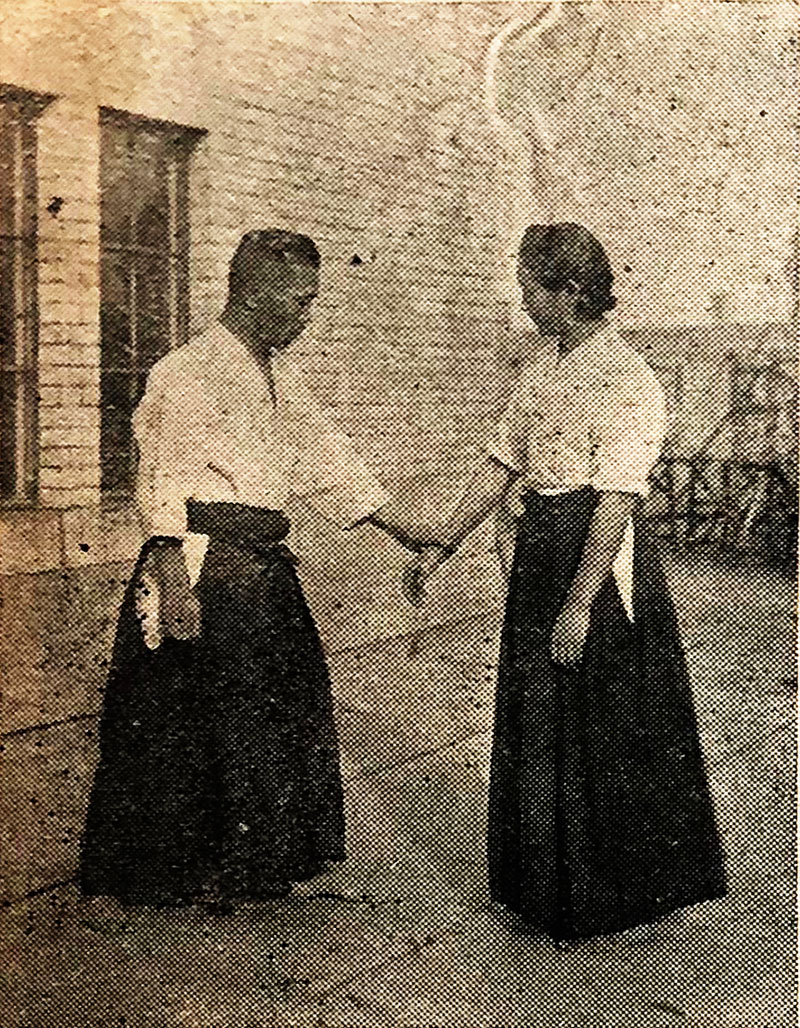
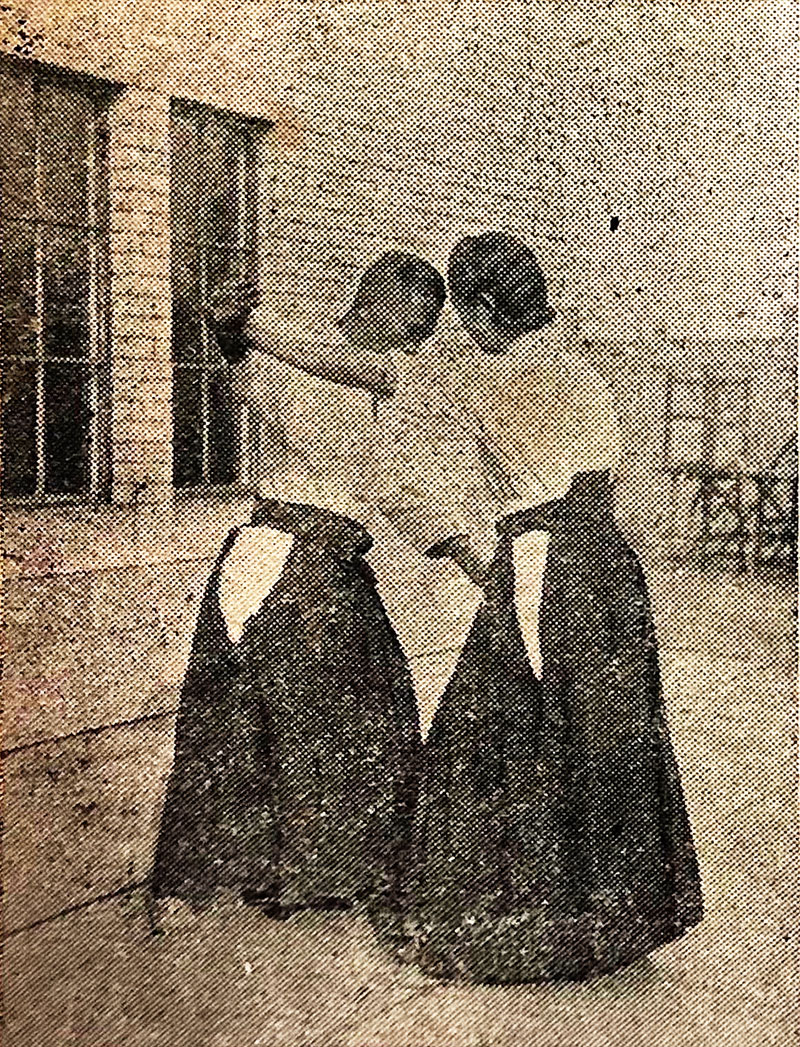
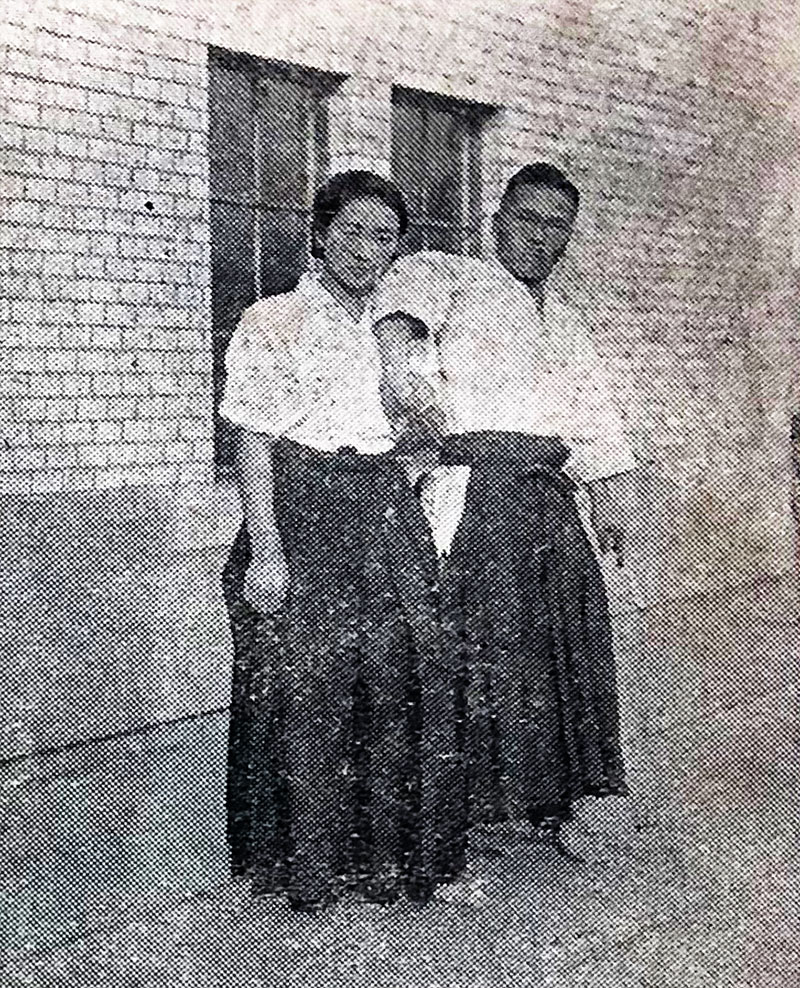
Sixth technique – Tachi waza
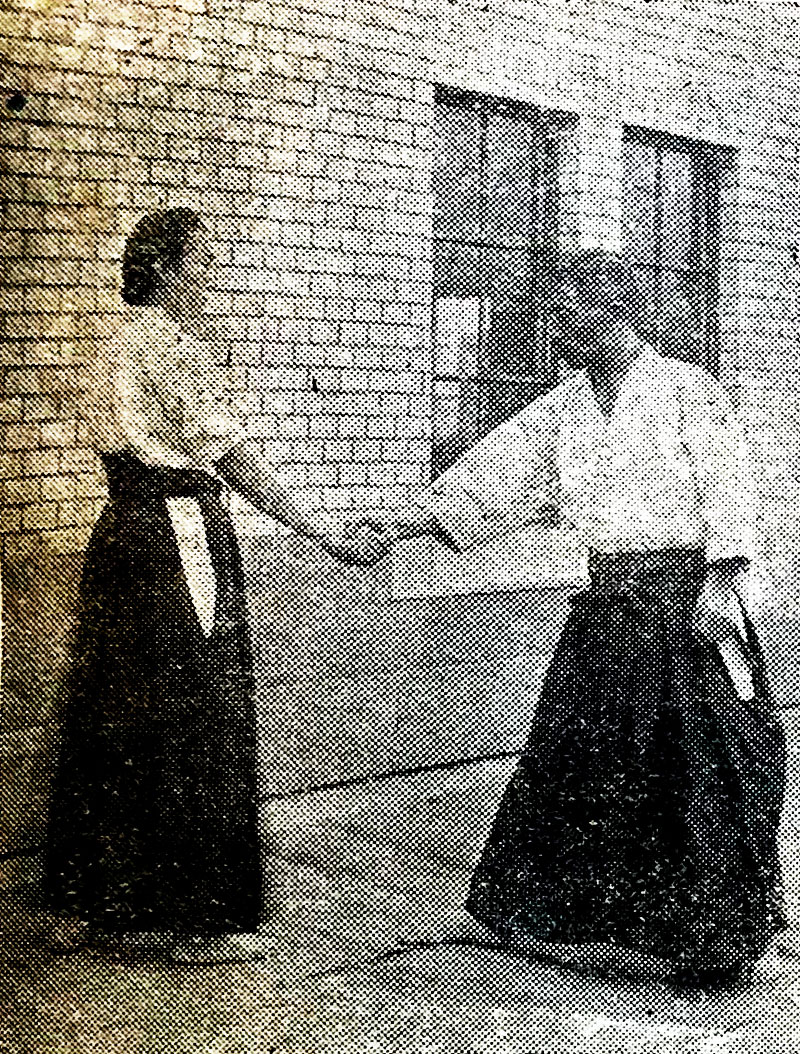
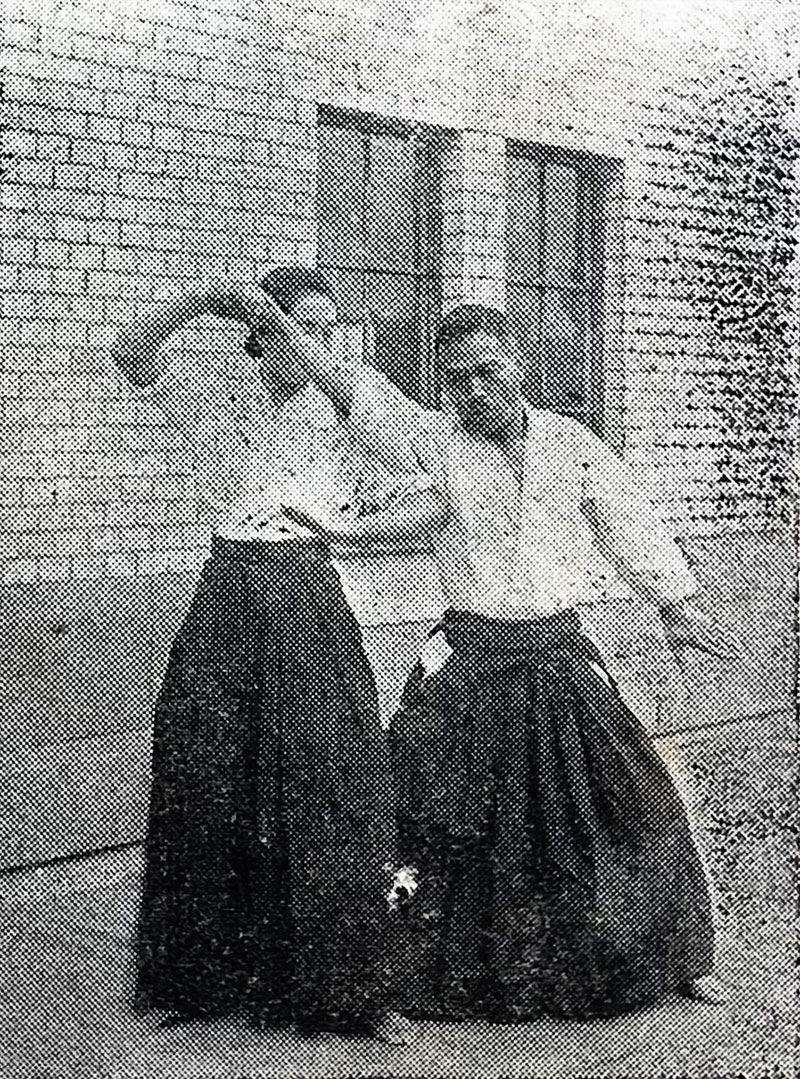
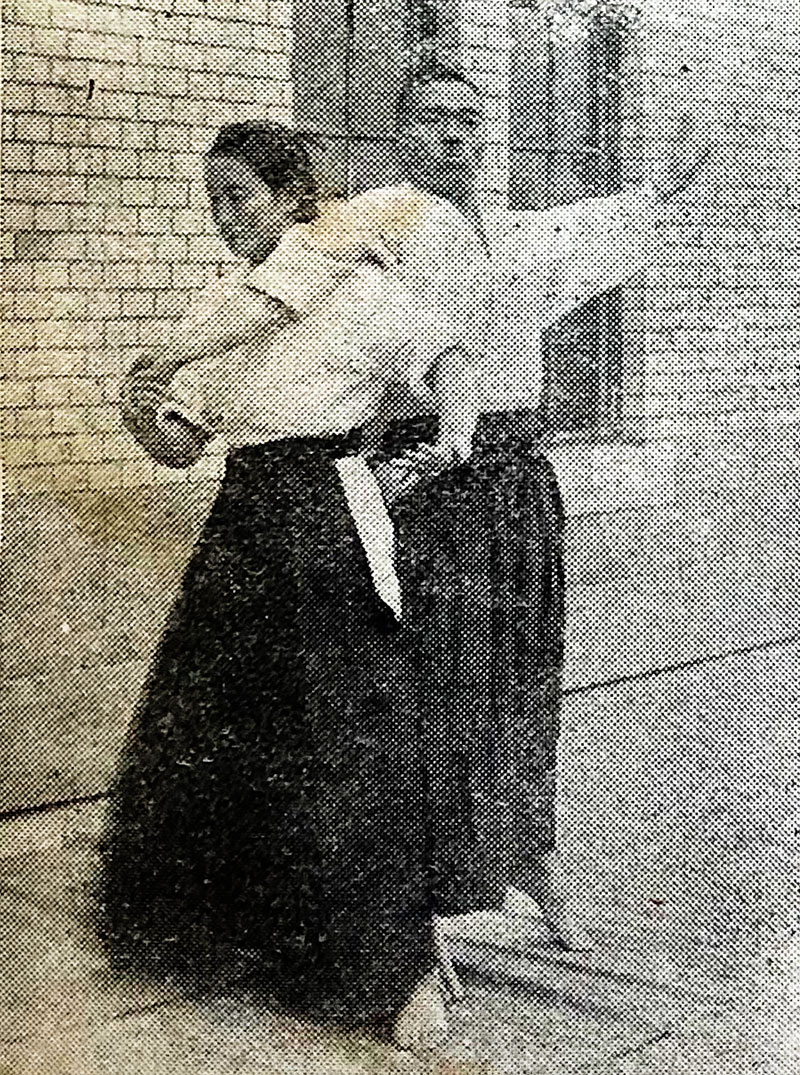
Profile Of Hisa Takuma
Born 1895 in Shikoku. In 1915 entered the Kobe Business School and in 1927 joined the staff of the Asahi Newspaper. Promoted in 1934 to Director of General Affairs of the Osaka Asahi Newspaper company. Invited Morihei Ueshiba to teach at the newspaper office dojo in Osaka in the early 30s and studied under Sokaku Takeda from 1936-1939. He received the menkyo kaiden scroll in May 1939. In 1970 his students formed the Takumakai, dedicated to teachings. He died on October 31, 1979.
- Guillaume Erard – Interview with Kobayashi Kiyohiro, 8th Dan Daito-ryu aiki-jujutsu and Manager of the Takumakai.
- 奥義
- 祕傳
- 皆傳
- Shin Budo Sosho (新武道叢書, lit. Shin Budo Series) is a series of books issued by the Kokubo Budo Kyokai (国防武道協会, lit.: Association of Martial Arts for National Defense), the same publishing company that produced Shin Budo. Although some of these books are still available today, unfortunately, I was unable to find evidence that a volume written by Hisa Takuma was ever produced in this collection.
- Joshi goshin jutsu (女子護身 術, lit.: self-defense for women).
- Note that the Soden actually contains nine of those techniques.

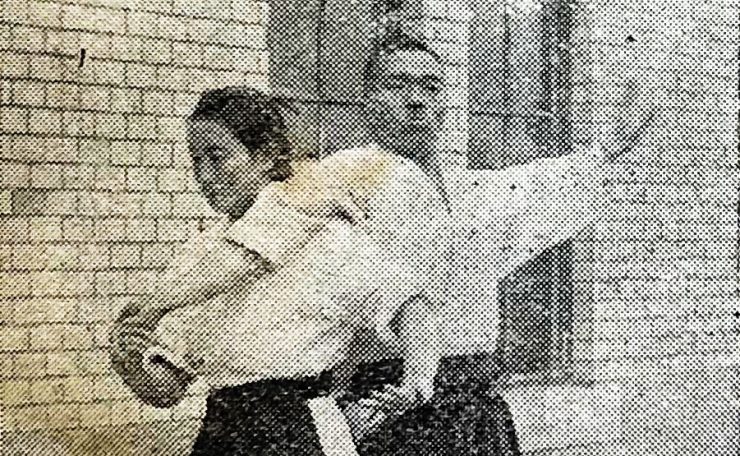

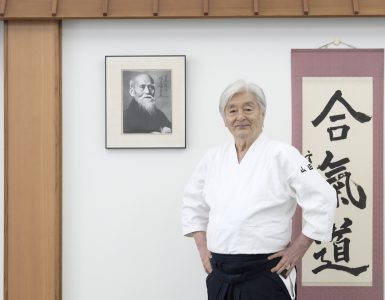
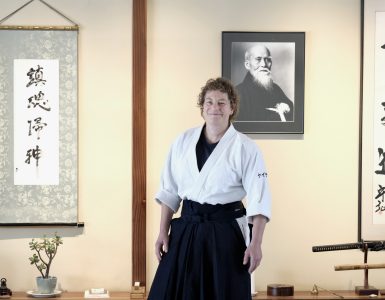








Add comment